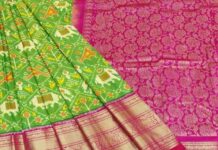 SAN FRANCISCO: The San Francisco Tribal & Textile Arts Show will celebrate its 30th Anniversary in 2016. One of the only vetted exhibitions of tribal art in the United States, the San Francisco Tribal & Textile Art Show is considered the top tribal art event in North America. A pioneer in genre specific art fairs, The San Francisco Tribal and Textile Arts Show is one of the first art fairs to focus on high-quality tribal arts, and has been instrumental in elevating the appreciation of ethnographic arts in the United States.
SAN FRANCISCO: The San Francisco Tribal & Textile Arts Show will celebrate its 30th Anniversary in 2016. One of the only vetted exhibitions of tribal art in the United States, the San Francisco Tribal & Textile Art Show is considered the top tribal art event in North America. A pioneer in genre specific art fairs, The San Francisco Tribal and Textile Arts Show is one of the first art fairs to focus on high-quality tribal arts, and has been instrumental in elevating the appreciation of ethnographic arts in the United States.
The 30th Anniversary edition will be open to the public from Friday, February 19-Sunday, February 21.
Special Programming on India
On show is an unusual photographic and textile narrative-chronicling the experiences of textile dealer Thomas Cole in India. Spanning the entire subcontinent, the exhibition focuses on the everyday beauty of India. These visions of the exotic are the stuff of mundane daily life for most Indians. According to Cole, “Nothing is perfect and India, at the best of times, is far from it.”
Selected highlights include:
A fine example of a mijora-a wooden bird sculpture from Madagascar courtesy Louis Nierijnck. Mijora were made for the graves of important families. This piece, from the late 19th / early 20th century is from the Sakalava peoples of west Madagascar. The Sakalava placed their deceased in rectilinear enclosures of wooden fencing. This example features a double bird motif. The birds were thought to represent the interconnection of life and death.
 Tinglit Shaman figure of a bound witch from Tambaran Gallery. The Tlingit people of the Pacific Northwest range from southern Alaska to Oregon. Tinglit shaman, called ‘ixht’ were healers who also foretold the future. They were consulted to heal the sick and drive out those who practiced witchcraft, among other things. The figure depicted here shows a bound witch.
Tinglit Shaman figure of a bound witch from Tambaran Gallery. The Tlingit people of the Pacific Northwest range from southern Alaska to Oregon. Tinglit shaman, called ‘ixht’ were healers who also foretold the future. They were consulted to heal the sick and drive out those who practiced witchcraft, among other things. The figure depicted here shows a bound witch.
A Bakongo wood fetish, Democratic Republic of Congo, 19th century. Courtesy of Patrick Mestdagh. .
Additional highlights include works from Oceania. Of particular note is an important New Guinea war shield from the Sepik River area, courtesy of Michael Hamson. The piece was originally collected in 1912/13 on the Kaiserin-Augusta River Expedition for the Museum fur Volkerkunde in Berlin, ex. Raymond Wielgus Collection, mid 19th century.
India Post News Service






